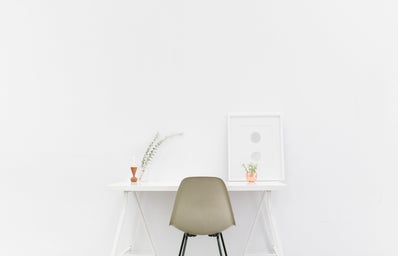Minimalism is a term that is often seen in modern media, especially on platforms related to lifestyle, influencer culture, and art. Perhaps one of the most popular places to see minimalism is on social media. Tumblr blogs and Instagram display troves of minimalist culture, usually in the form of white-walled rooms decorated with very few objects. It has become common, or rather pervasive, to see minimalism in interior design. Living design tends to be paired frequently with minimalism as recent economic woes and movements on ethical issues (such as environmental degradation caused by capitalism) have shifted ideas on consumerism. Thus, images of airy lofts, simple clothing made from natural products, and abstract kitchenware have become ubiquitous in social media. Books too, promote this kind of lifetsyle and aesthetic. Magazines such as Kinfolk focus on the simple pleasures in life, as well as discussing professionals who are involved in minimalist-related careers.
The minimalist movement or culture has a certain appeal that is not just founded by the popularity it holds on social media. Its rejection of materialism and appreciation for simplicity does have an ethical weight. In an age where consumption and advertising run rampant, minimalism offers an uncluttered insight into modern living. With consideration for environmental and human rights issues, the concept even seems like the ultimate, ideal lifestyle for all. But despite the values it supposedly holds, minimalism is often misused or wrongfully depicted as a high-class, fashionable trend. Through social media, minimalism is often expressed through abstract, almost ascetic pictures of artfully arranged rooms or still life-like arrangements. Though pleasing to the eye, such media miss the point of minimalist values.
Many times, these so-called “minimalist” lifestyles are made unattainable to those with lower incomes. The reason why social media influencers tend to appreciate minimalism is because they have enough wealth to easily replace items that are otherwise expensive or indispensable to those who are not as wealthy. People who have financial constraints have to save up on objects even if they are broken, thus it comes as no surprise that economically burdened people such as college students frequently have cluttered rooms. When one has limited money, owning and saving property becomes an inevitable duty; anxieties arise around future uses and threats of poverty. For a low-income citizen, holding onto objects is necessary as carelessly tossing out half-used or faulty goods can be lethal in terms of savings. Worn out sneakers? Can be reused for cleaning in the garage. Shortened pencils? Keep them instead of purchasing more, they can still write on notepads. Why bother clearing your desk clear for a brass pencil tray when you can have all of your stationery spread out, ready to be picked up at any time?
Minimalism still does, however, hold potential lessons in living if understood by individual standards. For someone who struggles with too many possessions while feeling cooped up, minimalism offers ideas on paring back the unnecessary in order to relieve physical and emotional burdens. As Kinfolk puts it, in its issue regarding essentialism: it isn’t about asking how little we can live with, but determining what we simply cannot live without.


